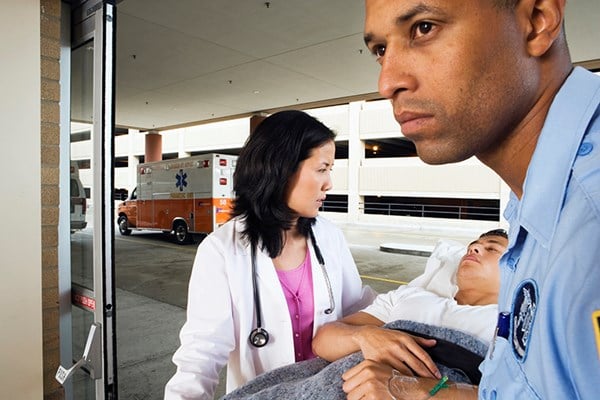Opioid addiction has cemented itself as a profound crisis in the 21st century, claiming numerous lives and exhibiting a distressing escalation in its toll.
Over the past decade, there has been a dramatic increase in overdose fatalities. In 2010, there were 21,089 deaths attributed to opioid overdoses, a figure that has since skyrocketed to 107,941 deaths in 2022, firmly establishing this crisis as a primary contributor to mortality rates in the United States.1 Synthetic opioids, particularly fentanyl, constitute a significant proportion of these fatalities, underscoring the severity of the epidemic and the urgent need for comprehensive intervention strategies.
Mechanism of Action
Opioids exert their analgesic effects by engaging cell surface receptors, primarily located within the central nervous system, which can be categorized into mu, kappa, and delta types. However, alongside providing immediate pain relief, opioid binding often induces a euphoric state.2 Addressing the challenges posed by opioid addiction, the medical community has sought effective interventions, among which buprenorphine has emerged as a notable solution.
Buprenorphine functions as a semisynthetic partial opioid agonist at mu receptor sites and as an antagonist at kappa receptors, typically administered via sublingual or buccal route. Key advantages of buprenorphine include its markedly reduced incidence of respiratory depression in opioid-dependent persons, enhanced bioavailability (ranging from 35-55% when administered sublingually), and extended half-life spanning 24-60 hours.3 Assessing opioid withdrawal is facilitated by tools like the Clinical Opiate Withdrawal Scale, aiding clinicians in gauging patients' withdrawal severity based on 11 common signs and symptoms. This assessment framework is pivotal in guiding the initiation of buprenorphine therapy, as it is indicated for patients experiencing mild to moderate withdrawal. Precise evaluation is crucial, as initiating treatment in patients below the mild withdrawal threshold may precipitate severe withdrawal symptoms.4
Treatment in the Field
The initiation of buprenorphine treatment for opioid use disorder (OUD) by paramedics in the prehospital setting represents a new and emerging intervention aimed at reaching patients who face the highest risk of opioid-related mortality.
In July 2023, paramedics at St. Joseph’s University Medical Center in Paterson, New Jersey, began a prehospital Medication-Assisted Treatment (MAT) for OUD that allows us to expand buprenorphine treatment before patients arrive at the ED. Our paramedics were trained to evaluate and identify a naloxone-precipitated withdrawal and the need to initiate MAT treatment for a patient's post-opioid overdose. Once identified, patients are screened for exclusion criteria such as abnormal mental status, pregnancy, and ingestion of methadone within the past 48 hours. If patients meet a COWS score ≥ 5, a shared decision is made with the patient to initiate treatment in the field. An order for “MAT Bundle” will be obtained under medical direction, and patients will start with a dose of 2 sublingual (SL) films of buprenorphine-naloxone 8 mg/2 mg. If symptoms persist with COWS continually >5, they can administer an additional sublingual dose after 10 minutes. If the patient's symptoms improve, the patient will be transported to the ED for further MAT resource guidance. For patients who refuse transport, we also provided our paramedics with a naloxone kit and MAT resource guide packet.
The launch of our prehospital buprenorphine program represents a pivotal milestone in our efforts to address OUD in our community. This initiative embodies a proactive strategy aimed at dismantling obstacles to MAT for individuals grappling with OUD. By integrating buprenorphine administration into prehospital settings, we have successfully forged a vital connection between emergency medical services and sustained addiction care. This timely intervention mechanism ensures that individuals in crisis receive immediate support, fostering a seamless continuum of care.
Data is collected through our EMS charting system with the implementation date of July 1. From 07/01/2023 to 03/05/2024, we administered the MAT bundle to 27.8% of patients eligible to receive it in the prehospital setting based on exclusion/inclusion criteria. Improvement of symptoms were reported in 58% of cases with zero patients experiencing side effects. Unfortunately, 13.1% of patients who were eligible refused treatment. Dosing throughout these cases has ranged from 8 mg/2 mg via sublingual or buccal to 16 mg/4 mg. Additionally, 60 MAT resource guide kits have been distributed throughout this time.
Given these positive results we hope to continue to pave the way in prehospital OUD treatment management by bridging a much-needed gap.
References
- Spencer MR, Garnett MF, Miniño AM. Drug overdose deaths in the United States, 2002–2022. NCHS Data Brief, no 491. Hyattsville, MD: National Center for Health Statistics. 2024.
- Pathan H, Williams J. Basic opioid pharmacology: an update. Br J Pain. 2012;6(1):11-6.
- Blazes CK, Morrow JD. Reconsidering the Usefulness of Adding Naloxone to Buprenorphine. Front Psychiatry. 2020;11:549272.
- Wesson DR, Ling W. The Clinical Opiate Withdrawal Scale (COWS). J Psychoactive Drugs. 2003;35(2):253-259.



